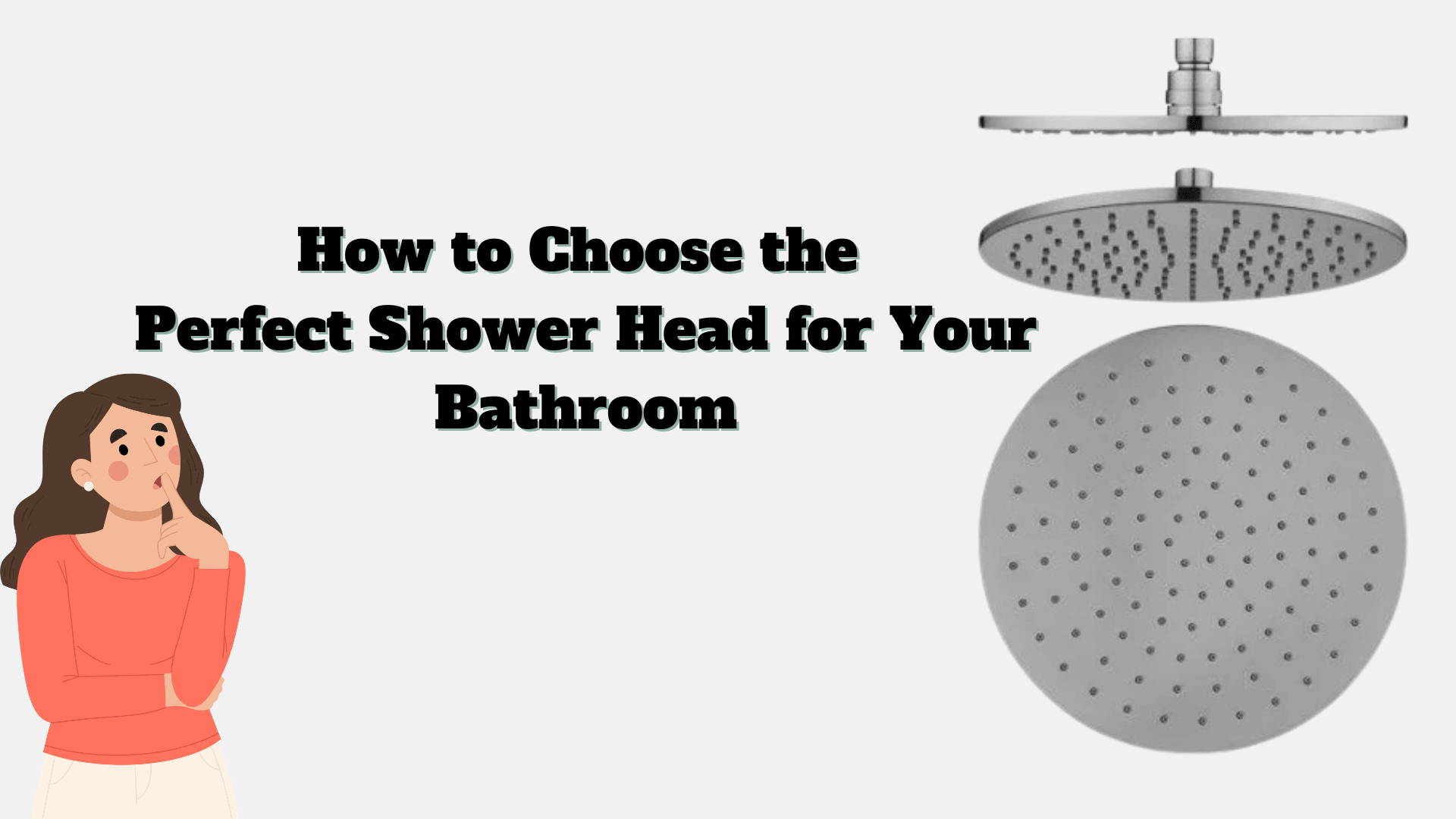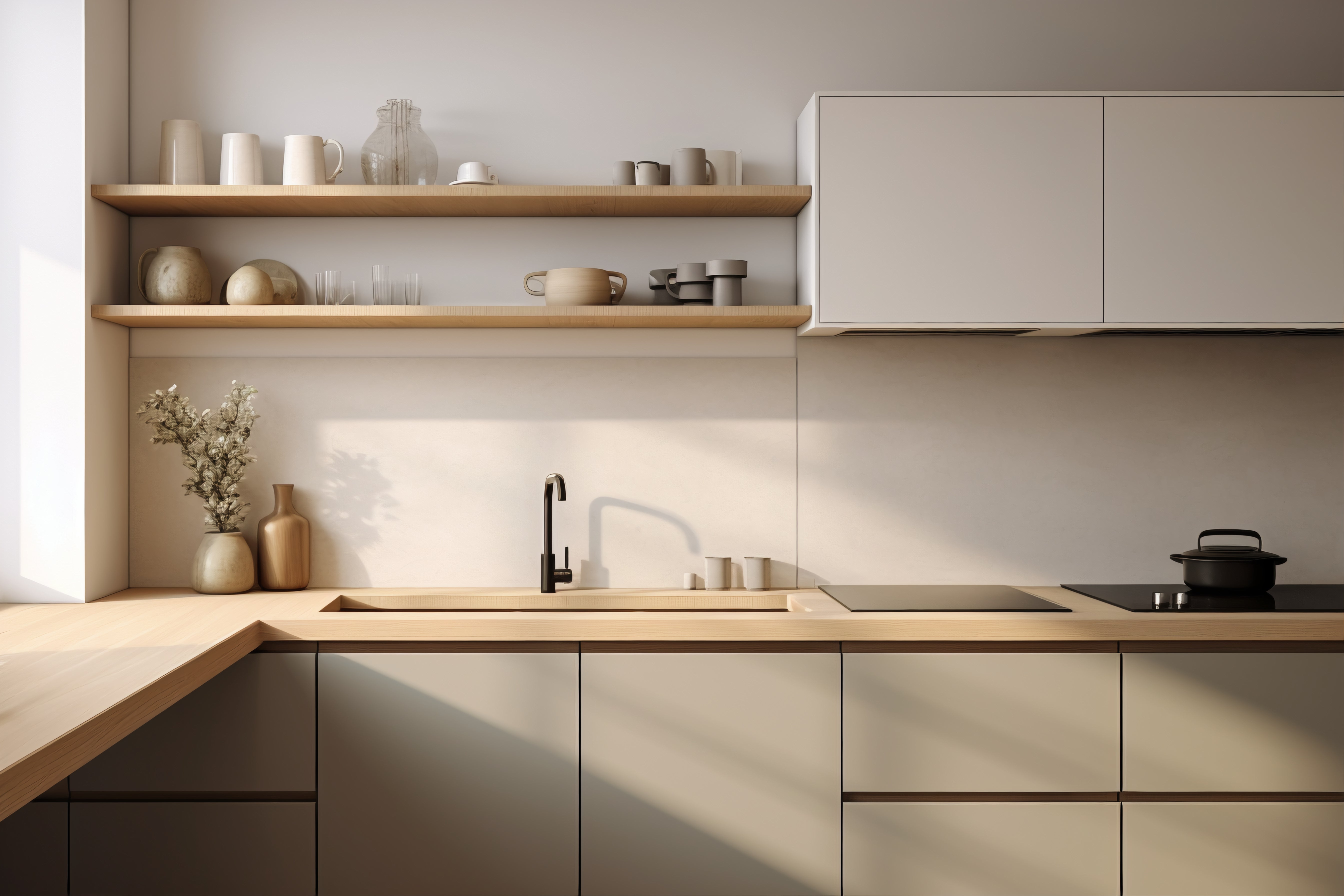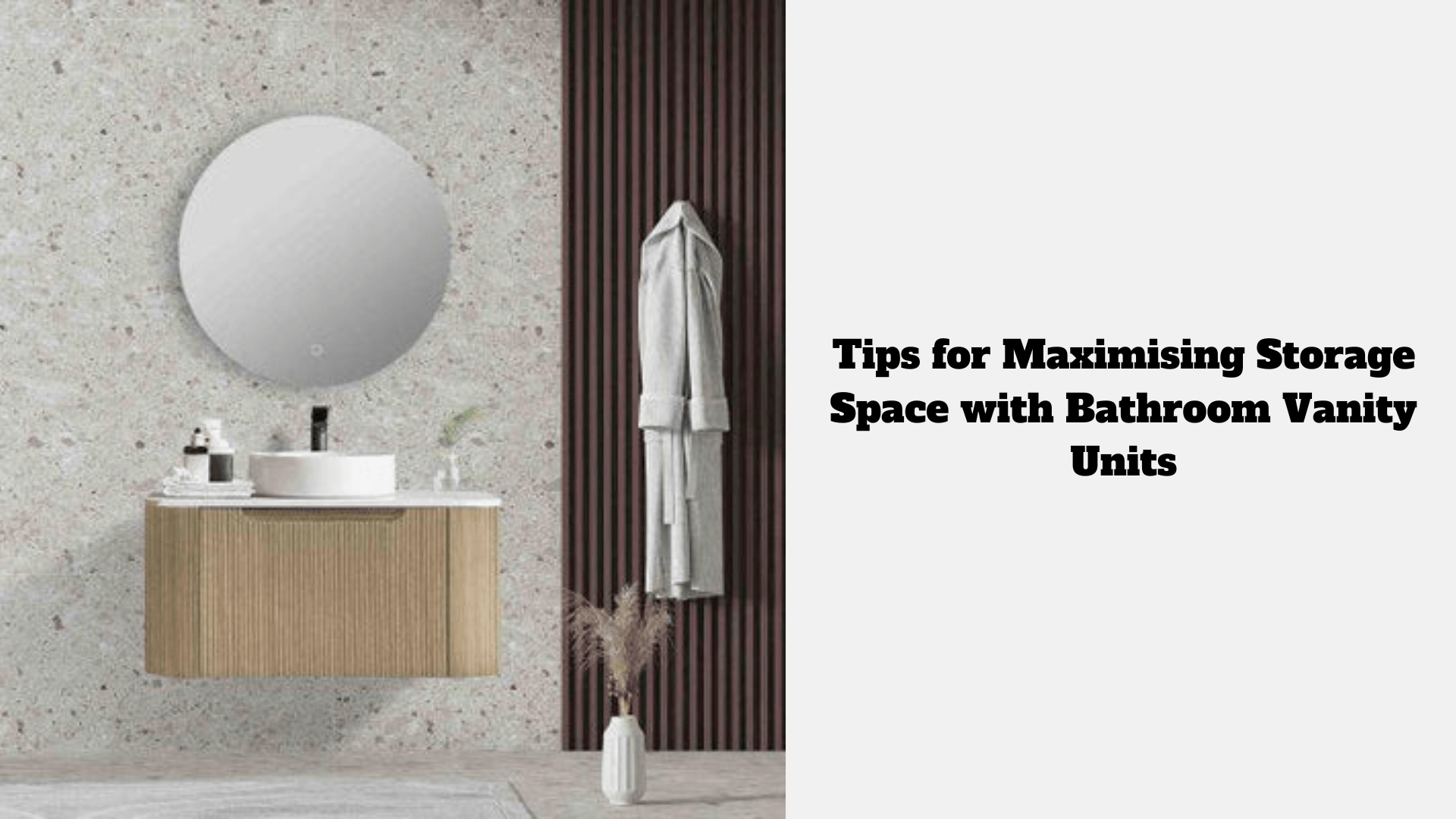
How to Choose the Perfect Shower Head for Your Bathroom
How to Choose the Perfect Shower Head for Your Bathroom ? A shower head might seem like a small part of your bathroom, but it can make a huge difference in your daily routine. Whether you’re looking for a relaxing rain shower or a powerful, high-pressure spray, the right shower head can completely transform your shower experience. With so many options available, choosing the perfect one can feel overwhelming. Don’t worry! In this guide, we’ll break down everything you need to know to find the best shower head for your bathroom. From water pressure and materials to style and eco-friendly features, we’ll help you navigate the choices and pick the perfect match for your needs. Ready to upgrade your shower? Let’s dive in!
Understand Your Water Pressure
Before choosing a shower head, it’s important to understand your home’s water pressure. The water pressure in your bathroom can make or break your shower experience. If the pressure is too low, your shower may feel weak and unsatisfying. On the other hand, if the pressure is too high, the water might be harsh or wasteful.
Why Water Pressure Matters
Water pressure determines how strong the water comes out of your shower head. If you have low water pressure, you might struggle with a weak or slow flow, making it difficult to rinse off. High water pressure can result in a powerful spray, which some people love, but it might not be ideal for others who prefer a gentler experience.
How to Check Your Water Pressure
You can easily check your water pressure by purchasing a water pressure gauge at a hardware store. Simply attach the gauge to your shower’s faucet and turn on the water. Most homes have a pressure between 40 to 60 psi (pounds per square inch), but anything below 40 psi is considered low.
Types of Shower Heads for Different Water Pressures
- Low Water Pressure: If your water pressure is low, look for shower heads designed to boost pressure. These shower heads are often labeled as "high-efficiency" or "pressure-boosting." They are designed with special nozzles that concentrate the flow of water, giving the illusion of higher pressure. You can also opt for a low-flow shower head, which reduces water usage without compromising on the water experience.
- High Water Pressure: If your water pressure is strong, you can go for more powerful shower heads that offer a fuller flow, such as rainfall or multi-function shower heads. These types of shower heads allow for a higher volume of water, which is ideal for those who enjoy a strong, invigorating shower.
Knowing your water pressure will help you choose the right shower head that provides a comfortable and enjoyable shower experience. If you’re unsure about your home’s water pressure, a quick consultation with a plumber can help you understand your options better.
Consider the Shower Head Type
There are several types of shower heads available, each offering a unique shower experience. The right one depends on your personal preferences, space, and how you like to use your shower. Let's look at some of the most popular types of shower heads.
Fixed Shower Heads
The fixed shower head is the classic choice. It’s mounted to the wall or ceiling and stays in one position, providing a steady flow of water.
- Pros: Fixed shower heads are simple and durable. They tend to be the most affordable option and require little maintenance.
- Cons: The main downside is the lack of flexibility. You can't move the head around, so it may be less convenient for activities like rinsing off pets or children.
Handheld Shower Heads
Handheld shower heads are attached to a flexible hose, giving you the freedom to move the shower head wherever you need it. These are a great option for people who want more control during their shower.
- Pros: Handheld shower heads are incredibly versatile. They can be used to target specific areas of the body, clean the shower walls, or even wash pets. They’re also useful for people with mobility issues who need a more flexible showering experience.
- Cons: Because the hose is attached, it can get in the way sometimes, and some models require a wall bracket for storage.
Rainfall Shower Heads
If you’re looking for a luxurious, spa-like experience, a rainfall shower head is a great choice. These shower heads are often large, square, or round, and they deliver a gentle, even flow of water that mimics natural rainfall.

- Pros: Rainfall shower heads offer a relaxing and soothing shower experience. They are often designed to provide a wide coverage area, which feels like standing under a gentle waterfall.
- Cons: They can be expensive and may not be ideal for low-pressure systems. They also require a larger space in your bathroom and may need to be mounted on the ceiling for the best experience.
Dual Shower Heads
A dual shower head system combines a fixed shower head with a handheld shower head, offering the best of both worlds. You can use one or both at the same time, depending on your needs.
- Pros: Dual shower heads are perfect for people who want the flexibility of a handheld shower and the coverage of a fixed shower head. They are great for couples who like different water pressures or preferences.
- Cons: They are more expensive and may require additional space or installation, especially if you're adding extra hardware for both heads.
Choosing the right type depends on your preferences for flexibility, water coverage, and the overall experience you want. Each type has its own advantages and is suited to different needs, so it’s worth considering your daily shower routine before making a decision.
Determine the Right Material and Finish
The material and finish of your shower head are important for both durability and style. Shower heads come in a variety of materials and finishes, each offering a different aesthetic and level of maintenance.
Materials
-
Stainless Steel
Stainless steel is one of the most durable and popular materials for shower heads. It resists rust and corrosion, ensuring a long-lasting product. It’s also sleek and modern, often found in higher-end models. - Pros: Durable, resistant to rust and corrosion, sleek and modern appearance.
- Cons: Can be more expensive compared to plastic options.
-
Brass
Brass is another high-quality material known for its longevity. Brass shower heads have a classic look and feel, making them a popular choice for luxury or vintage bathroom designs. - Pros: Extremely durable and long-lasting, classic aesthetic.
- Cons: Can be quite expensive and heavy.

- Pros: Affordable, lightweight, available in many colors and designs.
- Cons: Less durable than metal options, may wear out over time.
Finishes
The finish of your shower head affects both its appearance and maintenance. Common finishes include:
-
Chrome
Chrome finishes are shiny and sleek, giving your bathroom a clean, modern look. Chrome is also easy to maintain, as it resists water stains and fingerprints. - Pros: Bright, shiny look, easy to clean, widely available.
-
Cons: Prone to water spots, may require frequent

-
Matte Black
Matte black finishes have become very popular for modern bathrooms. They offer a sophisticated, stylish look and are great for hiding fingerprints and water spots. - Pros: Stylish, modern, and fingerprint-resistant.
-
Cons: May require more cleaning to prevent mineral buildup.

-
Brushed Nickel
Brushed nickel is a soft, matte finish that’s known for its subtle elegance. It’s resistant to corrosion and tarnishing, making it a great choice for high-use areas. - Pros: Subtle, sophisticated look, resistant to tarnishing, hides water spots.
-
Cons: May be harder to match with some bathroom styles.

-
Oil-Rubbed Bronze
Oil-rubbed bronze has a deep, rich color and an antique look. It’s great for traditional or rustic-style bathrooms. - Pros: Timeless, elegant appearance, hides water spots and fingerprints well.
- Cons: Requires more maintenance to keep its finish intact.
Choosing the right material and finish not only ensures the longevity of your shower head but also helps match the overall style of your bathroom. Whether you prefer a modern, sleek look or a more classic, vintage vibe, there are plenty of options to suit your taste.
Water-Saving Features
Water conservation is an important consideration when selecting a shower head. Not only is it better for the environment, but it can also help lower your water bills. Thankfully, there are many water-saving features available in modern shower heads.
Low Flow Shower Heads
One of the most effective ways to save water is by installing a low-flow shower head. These shower heads are designed to use less water without compromising the shower experience. They typically limit the flow to about 2.5 gallons per minute (gpm), which is significantly lower than older models that might use 5 gallons or more per minute.
- Benefits: Lower water usage means lower utility bills and a more eco-friendly showering experience. Many low-flow models are designed to still provide a satisfying water pressure, so you don’t have to sacrifice comfort.
- How it works: Low-flow shower heads use a flow restrictor or aerator to control the amount of water that flows through the shower head. Some models also feature pressure-boosting technology to ensure that the lower flow rate still feels powerful.
WaterSense Certification
The WaterSense label, issued by the U.S. Environmental Protection Agency (EPA), identifies shower heads that meet strict water efficiency criteria. A WaterSense-certified shower head uses no more than 2.0 gpm and has been tested for performance. Choosing a WaterSense model ensures that you’re not only saving water but also maintaining high performance and quality.
- Benefits: WaterSense shower heads are great for saving water while still delivering a powerful, enjoyable shower. Additionally, these models often meet state and local water conservation regulations, which can be beneficial in areas with water shortages.
Flow Control Technology
Some modern shower heads feature flow control technology, which allows you to adjust the water flow for different needs. You can easily reduce the water flow when shampooing your hair or washing your body, helping to save water without having to turn off the shower entirely.
- Benefits: Flow control lets you use less water when you don’t need it, making it easier to conserve water during your shower.
By choosing a shower head with water-saving features, you can enjoy an eco-friendly and cost-effective showering experience without sacrificing performance or comfort. Plus, many models are designed to be just as powerful and enjoyable as standard shower heads, proving that saving water doesn’t mean you have to compromise.
FAQS
1. What is the best shower head for low water pressure?
Look for pressure-boosting or low-flow shower heads. They improve water flow while conserving water.
2. How do I know if my bathroom needs a handheld shower head?
A handheld shower head is great if you want flexibility for tasks like cleaning, rinsing pets, or for people with mobility issues.
3. Can I install a new shower head myself, or should I hire a plumber?
Most shower heads are easy to install yourself with basic tools, but complex systems like ceiling-mounted or dual heads might need a plumber.
4. What is a WaterSense-certified shower head?
A WaterSense-certified shower head uses less water (max 2.0 gpm) without sacrificing performance, helping you save water and money.
5. What materials should I choose for my shower head?
For durability, choose stainless steel or brass. Plastic is cheaper but less durable.




